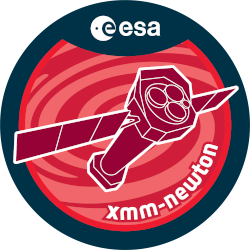

| Proposal ID | 078121 |
| Title | Probing the matter flow in distant QSO with the aid of gravitational lensing |
| Download Data Associated to the proposal | https://nxsa.esac.esa.int/nxsa-sl/servlet/data-action-aio?obsno=0781210201 |
| DOI | https://doi.org/10.5270/esa-lha5kd4 |
| Principal Investigator, PI | Dr Mauro Dadina |
| Abstract | The M_SMBH-sigma relation proved that the central black-hole and the hostinggalaxies co-evolved across cosmic time. The X-ray ultra-fast outflows in nearbyAGN, are probably one of the ingredients that built-up the needed feedbackmechanism. At high-z, however, they were measured only in few objects, mainlythanks to gravitational lenses. We thus propose to continue a program started inXMM-Newton AO13, to point for 150 and 80 ks a couple of distant and lensed QSO:Q2237+030 and MG0414+0534. Our goal is to characterize their X-ray spectrum andto detect blushifted absorption lines at E$sim$7-9 keV and, possibly, blurredreflection component. |
| Publications |
|
| Instrument | EMOS1, EMOS2, EPN, OM, RGS1, RGS2 |
| Temporal Coverage | 2016-11-26T19:27:26Z/2017-03-12T18:43:10Z |
| Version | 17.56_20190403_1200 |
| Mission Description | The European Space Agencys (ESA) X-ray Multi-Mirror Mission (XMM-Newton) was launched by an Ariane 504 on December 10th 1999. XMM-Newton is ESAs second cornerstone of the Horizon 2000 Science Programme. It carries 3 high throughput X-ray telescopes with an unprecedented effective area, and an optical monitor, the first flown on a X-ray observatory. The large collecting area and ability to make long uninterrupted exposures provide highly sensitive observations. Since Earths atmosphere blocks out all X-rays, only a telescope in space can detect and study celestial X-ray sources. The XMM-Newton mission is helping scientists to solve a number of cosmic mysteries, ranging from the enigmatic black holes to the origins of the Universe itself. Observing time on XMM-Newton is being made available to the scientific community, applying for observational periods on a competitive basis. |
| Creator Contact | https://www.cosmos.esa.int/web/xmm-newton/xmm-newton-helpdesk |
| Date Published | 2018-03-30T22:00:00Z |
| Last Update | 2025-08-04 |
| Keywords | "XMM", "galaxy co evolved", "blushifted absorption lines", "matter flow", "XMM-Newton", "cosmic time", "central blackhole", "distant qso", "gravitational lens", "lensed qso", "blurred reflection component", "feedback mechanism", "xmm newton ao13", "xray spectrum", "nearby agn", "program started" |
| Publisher And Registrant | European Space Agency |
| Credit Guidelines | European Space Agency, Dr Mauro Dadina, 2018, 'Probing the matter flow in distant QSO with the aid of gravitational lensing', 17.56_20190403_1200, European Space Agency, https://doi.org/10.5270/esa-lha5kd4 |